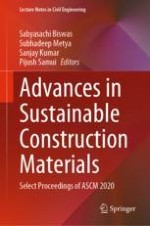This book presents select proceedings of National Conference on Advances in Sustainable Construction Materials (ASCM 2020) and examines a range of durable, energy-efficient, and next-generation construction materials produced from industrial wastes and by-products. The topics covered include sustainable materials and construction, innovations in recycling concrete, green buildings and innovative structures, utilization of waste materials in construction, geopolymer concrete, self-compacting concrete by using industrial waste materials, nanotechnology and sustainability of concrete, environmental sustainability and development, recycling solid wastes as road construction materials, emerging sustainable practices in highway pavements construction, plastic roads, pavement analysis and design, application of geosynthetics for ground improvement, sustainability in offshore geotechnics, green tunnel construction technology and application, ground improvement techniques and municipal solid waste landfill. Given the scope of contents, the book will be useful for researchers and professionals working in the field of civil engineering and especially sustainable structures and green buildings.
